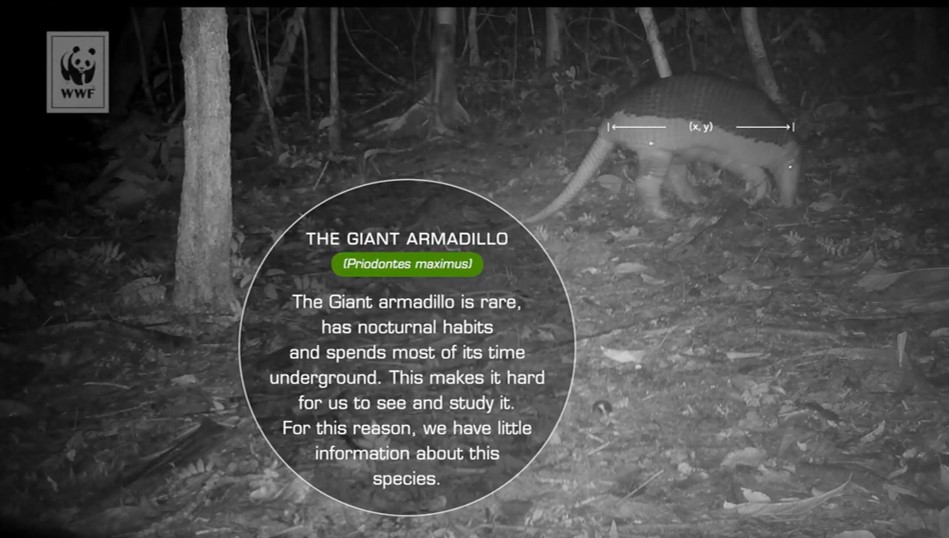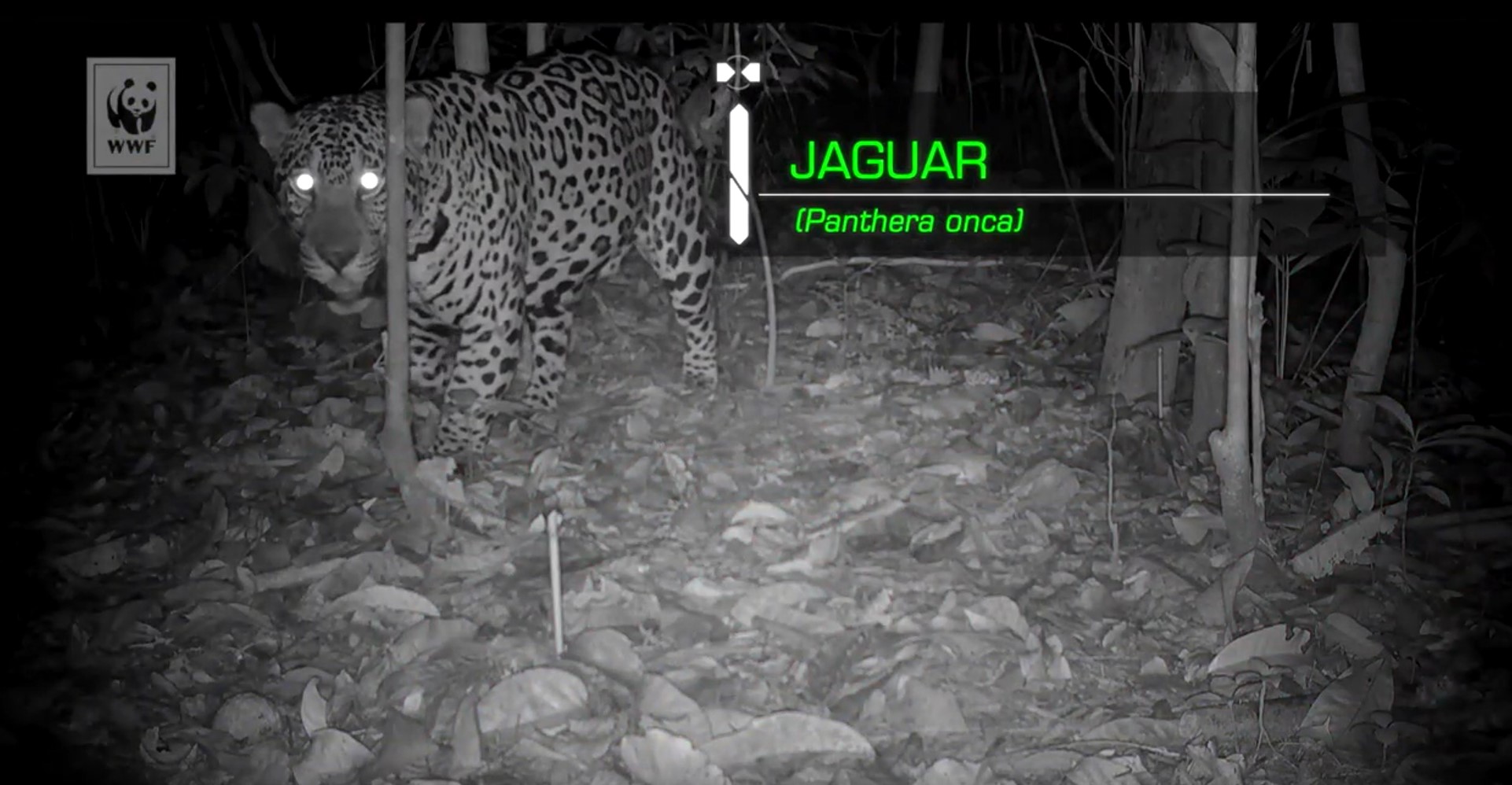Camera traps have been a key part of the conservation toolkit for decades. Remotely triggered video or still cameras allow researchers and managers to monitor cryptic species, survey populations, and support enforcement responses by documenting illegal activities. Increasingly, machine learning is being implemented to automate the processing of data generated by camera traps.
A recent study published showed that, despite being well-established and widely used tools in conservation, progress in the development of camera traps has plateaued since the emergence of the modern model in the mid-2000s, leaving users struggling with many of the same issues they faced a decade ago. That manufacturer ratings have not improved over time, despite technological advancements, demonstrates the need for a new generation of innovative conservation camera traps. Join this group and explore existing efforts, established needs, and what next-generation camera traps might look like - including the integration of AI for data processing through initiatives like Wildlife Insights and Wild Me.
Group Highlights:
Our past Tech Tutors seasons featured multiple episodes for experienced and new camera trappers. How Do I Repair My Camera Traps? featured WILDLABS members Laure Joanny, Alistair Stewart, and Rob Appleby and featured many troubleshooting and DIY resources for common issues.
For camera trap users looking to incorporate machine learning into the data analysis process, Sara Beery's How do I get started using machine learning for my camera traps? is an incredible resource discussing the user-friendly tool MegaDetector.
And for those who are new to camera trapping, Marcella Kelly's How do I choose the right camera trap(s) based on interests, goals, and species? will help you make important decisions based on factors like species, environment, power, durability, and more.
Finally, for an in-depth conversation on camera trap hardware and software, check out the Camera Traps Virtual Meetup featuring Sara Beery, Roland Kays, and Sam Seccombe.
And while you're here, be sure to stop by the camera trap community's collaborative troubleshooting data bank, where we're compiling common problems with the goal of creating a consistent place to exchange tips and tricks!
Header photo: ACEAA-Conservacion Amazonica
Masters student at University of Jena/ Assistant in LEPMON Project at Dr. Gunnar Brehms Lab
- 0 Resources
- 0 Discussions
- 1 Groups
- @ptynecki
- | Piotr
Software Engineer with 10+ years of experience in application design, development, testing and deployment. Highly experienced in Health Care, Life Science and BigData projects. Artificial Intelligence researcher (NLP, Computer Vision) with experience in Wildlife Conservation.
- 0 Resources
- 6 Discussions
- 4 Groups
- @taruuppal
- | She/Her
Grant researcher and writer
- 0 Resources
- 0 Discussions
- 1 Groups
- @Muzna
- | She, Her
Muzna Kashaf is a dedicated herpetologist who recently achieved her MPhil, showcasing her commitment to advancing knowledge in the field. Her research focus lies in amphibians, and she has utilized Geographic Information Systems (GIS) to enhance precision of her studies.
- 0 Resources
- 0 Discussions
- 2 Groups
My name is Ann Wambui ,a conservationist working as a conservation officer at Mugie Conservancy. Am a Diploma holder specialized in Wildlife Management from the Wildlife Research Training Institute. Currently, am Distance Learning student at the Africa Nazarene University.

- 1 Resources
- 5 Discussions
- 9 Groups
- @diyaquanauts
- | he / him
Digital nomad, software developer, running mechatronic engineering firm in Seychelles to assist ocean conservation groups.
- 0 Resources
- 7 Discussions
- 9 Groups
I'm a young agronomist/expert in the planning and management of protected areas at the start of my career in the conservation of terrestrial flora and fauna. I have good experience in plant management and production. My passion for biodiversity conservation has led me to acquire
- 0 Resources
- 0 Discussions
- 3 Groups
- @KylerA
- | he/him
National Geographic Society


- 0 Resources
- 14 Discussions
- 3 Groups
- @csugarte
- | Miss
I am a PhD student working on human-carnivore conflict and coexistence
- 0 Resources
- 0 Discussions
- 3 Groups
Wildlife Ecologist
- 0 Resources
- 0 Discussions
- 9 Groups
- @skylord
- | He/him
I run a startup with interest in conservation
You can reach out to me at [email protected]
www.thinkevolveconsulting.com
- 0 Resources
- 4 Discussions
- 1 Groups
- @magerk
- | she/her
wildlife ecologist, Associate Professor of Environmental Science, Policy, & Sustainability and Biology
- 0 Resources
- 0 Discussions
- 2 Groups
Watch our interview with pioneering young Tanzanian vulture researcher Vainess Laizer! Her research investigating the breeding success of white-backed vultures in the western corridor of the Serengeti ecosystem using...
16 April 2024
Are you passionate about wildlife conservation and eager to contribute to meaningful research efforts? Lion Landscapes is seeking a dedicated and proactive Research Assistant to join their team.
11 April 2024
Article
You’re invited to the WILDLABS Variety Hour, a monthly event that connects you to conservation tech's most exciting projects, research, and ideas. We can't wait to bring you a whole new season of speakers and...
22 March 2024
The Smithsonian’s National Zoo and Conservation Biology Institute (SNZCBI) is seeking two postdoctoral fellows to engage more directly with identifying conservation metrics for vertebrate communities and populations.
14 March 2024
Catch up on the conservation tech discussions and events that happened during World Wildlife Day 2024!
7 March 2024
EcoAssist introduces a free African species identification model for camera trap images, capable of recognising 30 species.
5 March 2024
The primary focus of the research is to explore how red deer movements, space use, habitat selection and foraging behaviour change during the wolf recolonization process.
10 February 2024
Article
An update on @Alasdair and @adanger24's HWC project
11 January 2024
The Conservation Technology Laboratory within the Population Sustainability department is seeking two fellows for summer 2024.
9 January 2024
Outstanding chance for a motivated and ambitious individual to enhance their current project support skills by engaging with a diverse array of exciting projects in the field of biodiversity science.
11 December 2023
Article
Read our interview with Clementine Uwamahoro, African Parks’ Country Manager in Conservation Technology overlooking technology operations for both Akagera National Park and Nyungwe National Park.
29 November 2023
TagRanger® is a state-of-the-art wildlife finding, monitoring and tracking solution for research, conservation and environmental professionals. With superior configurability for logging data, reporting location and...
23 November 2023
May 2024
event
October 2024
February 2023
event
| Description | Activity | Replies | Groups | Updated |
|---|---|---|---|---|
| Hi Robin this is a great idea! Have been thinking about approaching the community for quiz questions. Will reach out to Xavier to ask if we can use it or if he wishes to run it on... |
|
Camera Traps, Data management and processing tools, Software and Mobile Apps | 10 hours 57 minutes ago | |
| Got it. We should definitely be able to handle those images. That said, if you're just looking for counts, then I'd recommend running Megadetector which is an object detection... |
|
AI for Conservation, Camera Traps, Open Source Solutions, Software and Mobile Apps | 1 day 21 hours ago | |
| Hi everyone!@LashaO and @holmbergius from the Wild Me team at ConservationX Labs gave a superb talk at last month's Variety Hour,... |
|
AI for Conservation, Camera Traps | 2 days 16 hours ago | |
| Hi everyone! @zhongqimiao was kind enough to join Variety Hour last month to talk more about Pytorch-Wildlife, so the recording might be of interest to folks in this thread. Catch... |
+5
|
AI for Conservation, Camera Traps, Open Source Solutions | 2 days 4 hours ago | |
| Can't beat Dan's list! I would just add that if you're interested in broader protected area management, platforms like EarthRanger and SMART are amazing, and can integrate... |
|
Data management and processing tools, Camera Traps, Conservation Tech Training and Education | 2 days 13 hours ago | |
| Saul Greenberg is a great guy! He has made a few very useful videos regarding the Timelapse/Megadetector integration:https://grouplab.cpsc.ucalgary.ca/grouplab/uploads/... |
+14
|
Camera Traps | 5 days 7 hours ago | |
| That sure sounds interesting! Thank you for your input, @Colin_Cook |
+13
|
Camera Traps, Drones | 1 week 5 days ago | |
| EcoAssist is an application designed to streamline the work of ecologists dealing with camera trap images. It’s an AI platform that... |
|
Software and Mobile Apps, AI for Conservation, Camera Traps | 2 weeks 2 days ago | |
| Hi @Alasdair Great to hear from you! Thanks for the comment and for those very useful links (very interesting). And for letting @Rob_Appleby know. I can't wait to hear... |
|
Emerging Tech, Camera Traps, Conservation Tech Training and Education | 2 weeks 6 days ago | |
| Hello everyone, I'm interested in gathering insights on how the behavior of different species impacts the development and efficacy of... |
|
Biologging, Acoustics, Camera Traps, eDNA & Genomics, Emerging Tech, Marine Conservation | 3 weeks 6 days ago | |
| Hi Andrew! Great to hear your friend, Scott working in Indonesia! I bet he is working on east region with lot of cool monitor lizards!I use Mavic 2 as well for my crocodile... |
|
Camera Traps | 1 month 2 weeks ago | |
| Ah yes. I didn’t notice that. Indeed it’s “near infrared”, 850nm lighting. |
|
Camera Traps, Marine Conservation | 1 month 3 weeks ago |
Camera Trap Symposium - Go-Long Board
8 November 2019 12:10am
Virtual Meetup Discussion: Camera Trapping
25 October 2019 4:39pm
6 November 2019 9:54am
The Base Station where the data is sent using LoRa to be backhauled by satellite will definitely require larger batteries than a tracking tag!
However, we have tried to ensure that despite this the Base Station can be carried on foot by a small team to wherever it needs to be deployed. To do this we have designed a battery pack based on a small lead acid car battery, and no single item should weigh more than 6Kg so the weight can be distributed.
Our cameras and sensor endpoints contain internal rechargeable lithium ion batteries which are also bigger than a tag could have.
However, for a tracking tag it could still use a small battery as LoRa radios are very low power and the tag would only send the data to the Base Station when it is within range. This could be done by either the tag having a geo-fence feature - so it would know when it is close to a Base Station to try and send data - or the tag could try and communicate with a Base Station at set times of the day - at times when the Base Station can also be programmed to be awake. If the tag received nothing back after trying to connect it wouldn't try to send the data until another period of time.
For video transmission, LoRa is not a suitable protocol and you need to start looking at Microwave and TV Whitespace!
6 November 2019 10:05am
Thanks Sam
I am looking at LoRa for high resolution GPS tracking, and the project also involves camera trapping at scent marking sites. Power is already limiting collar lifetime (most of it goes to the GPS rather than the LoRa module), but transmitting real time pictures from marking sites while the marking is going on would be neat.
Camera Trapping: Incredibly Useful Resources List
 Ariel Hammond
Ariel Hammond
5 November 2019 12:00am
Plant-Powered Camera Trap Breakthrough
 Alasdair Davies
Alasdair Davies
15 October 2019 12:00am
Panatraps: 360 camera traps
8 October 2019 11:28am
Camera Traps and DMR Radio via IP?
26 September 2019 5:33pm
WILDLABS Virtual Meetup: Camera Trapping
26 September 2019 12:00am
Residents of the Forest: Camera Trap Educational series shows the diversity of Amazon dwellers
25 September 2018 2:52pm
17 May 2019 4:16pm
Check it out our new episode of the "Residents of the Forest" Camera Trap series about two Amazon ground-birds: White-Winged Trumpeter and the Spix’s Guan
https://www.youtube.com/watch?v=ZevHJTZRDKE
Hi all I am sharing the latest episode of WWF-Brazil web series "Residents of the Forest". The previously unseen images, obtained exclusively by WWF-Brasil, were captured by camera traps installed in the Chico Mendes Extractive Reserve, in the Brazilian State of Acre. Our seventh episode, focus on the White-Winged Trumpeter and the Spix’s Guan . The web series “Residents of the Forest” started last year, among the animals featured on the videos already released are the Pacarana, the tapir, some canids and anteaters from the Amazon.
The work with camera traps is a partnership between WWF-Brasil and other institutions, such as the Community Forest Producers Cooperative (Cooperfloresta), ICMBIO and the Residents and Producers Association of the Chico Mendes Extractive Reserve in Xapuri (Amoprex). Its aim is to monitor the conditions of the existing biodiversity in the Chico Mendes Extractive Reserve, in community forestry managed areas.
Check previous videos on your playlist: https://lnkd.in/eHhgDqA


12 July 2019 4:51pm
"Residents of the Forest" Series: New episode brings images of the giant armadillo, the largest and rarest armadillo of the world The Amazon’s armadillos are the protagonists of the eighth episode of the series "Residents of the Forest". The new set of unpublished and exclusive images captured at the Chico Mendes Extractive Reserve, in the state of Acre (AC), shows different species of armadillos and brings various curiosities about one of the most distinctive animals of the Amazonian biome. Among the animals depicted in the film are the Southern naked-tailed armadillo (Cabassous unicinctus), the Nine-banded armadillo (Dasypus novemcinctuo), the Greater long-nosed armadillo (Dasypus kappleri), and the giant armadillo (Priodontes maximus). They are shown digging, feeding, and even bathing! The images come from photographic traps installed inside the Resex.
Read the full story at:
https://www.wwf.org.br/informacoes/english/?72004/Residents-of-the-Forest-Series-New-episode-brings-images-of-the-giant-armadillo-the-largest-and-rarest-armadillo-in-the-world
Check the video at:
https://www.youtube.com/watch?v=X6iKlFJYal4




20 September 2019 4:52pm
Jaguar, cougar, jaguarundis and ocelot: In its last episode, the series “Residents of the Forest” brings images of the Amazon Felids
In its ninth and final episode, the web series “Residents of the Forest”, produced by WWF-Brasil since last year, brings another set of unpublished and exclusive camera-trap images. This time, the stars are the cats of the Amazon. Among the animals depicted in the video are jaguarundis (also known as the "gato-mourisco" or "moorish" cat in Portuguese), ocelots, cougars (also known as pumas), and jaguars.
Recorded during the last few months at the Chico Mendes Extractive Reserve (Resex) in the state of Acre, Brazil, the images were captured through tree-mounted camera traps that have motion sensors and record anything that moves. By doing so, these cameras could record scenes of animals in their natural environments during the day and night.
Watch it and check the playlist with all nine episodes at:
https://www.youtube.com/watch?v=y1aO8739Htk&list=PLFfXasjdYEpLghWXIahnFMlVfrRdPkyBe
Read the full story at:
https://www.wwf.org.br/?72523/Jaguar-cougar-and-ocelot-In-its-last-episode-the-series-Residents-of-the-Forest-brings-images-of-the-large-Amazon-felids


[ARCHIVED] Camera trap Tech Symposium Nov 7/8th 2019
20 September 2019 7:32am
African leopard research - best camera trap?
3 September 2019 11:29am
19 September 2019 7:16am
Hi Louisa
I have exactly the same questions!
Over the last few years there has been a proliferation of cheap camera traps flooding the market (Apeman, Distianert, Crenova...the list is long). I wouldn't normally recommend budget cameras like these (<$100) for research (quality control issues...), but keen to hear from others if they've worked OK for you.
When I posted a similar question on Twitter, I had a few responses, which might be of interest (one vote for Apeman for arboreal trapping, various votes for Bushnell, which are a bit more expensive).
I think these are all infrared though, not white flash.
If you do take the plunge on some of these cameras, we'd all be interested to hear how you get on!
Thanks
Ollie
Solutions to Camera Trap Theft?
29 October 2017 9:32pm
24 August 2019 4:29pm
A few years ago this solution would have been thought of as nuts.
Have another cheap camera pointing at the expensive camera.
How it would work is like this.
The expensive camera or its housing detects it is being tampered with (tilt detector attached to a microcontroller). The microcontroller is also attached to a small short range radio (NRF24L01). This thing will be asleep all the time and use almost no power, until it is tilted. BOM (bill of materials) less than $10.
The cheap camera is so small it can mostly be buried underground. That is also controlled from a microcontroller, and that too has a small radio. However this radio needs to be listening all the time - BOM will go up with a bigger battery. I've had luck with these cheap 'key fob' 808 cameras, they record video onto their own sd card. BOM probably about $30-40.
Now this wont stop someone stealing the cams, but might lead to an arrest. The argument about sticking a GPS in the housing is not convincing for me, a GPS is a very specific type of pcb usually featuring an easily identifyable antenna - so can just be ripped out. If it were me it would be the first thing I'd look for.
I've used cheap chinese arduino pro-minis and 808 style cams for a while, and while its nice to stick PIRs etc on them to detect intruders etc, the result is usually an empty battery and an sd card full of spider or ant head shots.
If you wanted to scare the wrong-doers off at the moment of theft, then it would be possible to play an audio warning, or shout 'you are now being filmed' or replay the crackle of a walkie-talkie (search : arduino mp3 player). The expensive camera's transmitting radio signal could be picked up by more than one device you see? The noise could be coming from the left, the cam in the ground could be on the right. These simple radios can have a range of 50+ metres, if you pick the right ones. There are other RF options, as well as GSM dialers of course.
If all this sounds a bit complex, with some work and thought these counter measures could be set and forget "black box devices".
12 September 2019 5:08pm
Hi Paul,
Just curious about how you go about interfacing to 808 cameras: part of the problem is you don't always know which exact model you're getting (or at least I don't), how do you work around this?
Some time back I "discovered" the SQ11/SQ12 cameras and bought a couple. Have you had any experience with them? I don't think they're any easier to interface to, but theoretically they should all be identical. A plus is you can get a waterproof housing for them.
Thanks,
-harold
12 September 2019 6:03pm
For the 808s I normally go through links on the chucklohr website, the absolute oracle on 808s. My last purchase were Mate 808 1080P "spy" cameras, with a long camera cable, they do away with the whole plastic housing and just give you the board with components. I ordered from their website in '17, but it seems they are all over the place on ebay ATM.
I tried the SQ11s, but they run awful hot - but for say, 2 minutes of video they work just fine - but minute, I had one working in a hat - thats how I know how hot they can get.
As for "Interface with the 808" I take this to mean 2 things :
a) how do you intercept the video signal to, say, send something to an email address
- you don't, well at least I couldn't, you have to physically go and get the sd card out
b) how do you turn it on an off?
- I unashamedly used this idea from Gordon Williams of Espruino fame :
https://www.espruino.com/Time+Lapse+Camera
You'll notice the clever hack to fire up the cam using 2 i/o pins simultaneously.
Now the cam I mentioned above, like them all, has a config text file, so here you set the image size, whether it starts filming when turned on - with some other basic settings such as date/time etc.
There are lots of gotchas with this, not least of which is when reset that that text file is overwritten with some (sane) defaults, which may not be the default you want.
I found the Mate 808 config did most things, all I had to do was turn the cam on and off - and I got this working with an Arduino pro mini 3.3v.
So the "smarts" can be on an Arduino, read sensors, if/else, film for 30 seconds, 60 seconds, dont film and so on - send an alert etc.
I toyed with the idea of "potting" the cam and Arduino in resin to suit the environment, but as I said, the greater part of it could be buried - just means breaking out the microphone, to say, the same length as the extended camera cable.
The drawback with PIRs I found was all the false positives, had better luck with these small microwave "radar sensors" - Andreas did a fine recap on what was available about 2 years ago.
https://www.youtube.com/watch?v=9WiJJgIi3W0
Instant Detect 2.0 emerges
 Sam Seccombe
Sam Seccombe
3 September 2019 12:00am
16 November 2023 1:11am
Camera Trap Technology Symposium (Recordings): Bringing Developers and Users Together
2 September 2019 12:00am
Automated Identification of Indonesian Rhinos
 Cooper Oelrichs
Cooper Oelrichs
27 July 2019 12:00am
Data analysis question: More detections closer to set-up date
27 May 2019 10:15am
1 July 2019 10:49am
Hey Eric
Thank you for your reply! the camera we used is Bushnell Trophy Cam HD Aggressor (Model 119776). The battery was showing one bar left from the start because we used rechargable batteries which seems to be able to last long enough though only showing one bar.
Eagle
1 July 2019 2:57pm
Given that the rechargable batteries are starting out with lower voltage, I would suggest trying to run a test wherein you use standard alkaline or high powered Lithium as a test to see if that resolves your issue. If it does, and you want to make sure you can still use rechargeable batteries, maybe consider something like:
https://www.amazon.com/AA-Batteries-Rechargeable-ECO-Friendly-Recyclable/dp/B079JFK22D/ref=sr_1_3?crid=3UY7WGNZXC31Q&keywords=lithium+rechargeable+aa+batteries&qid=1561989505&s=gateway&sprefix=lithium+rec%2Caps%2C173&sr=8-3
as those will maintain a full 1.5 v level until they totally run out of power. Both NiCD and NiMH batteries exhibit a voltage drop as power depletes, which could be what is causing decreased detections.
2 July 2019 9:25am
There was a talk recently at ZSL where a similar thing was found using camera traps studying wild pigs in the Osa Penisula. Tracking and other audio evidence showed that the pigs populations were circumnavigating camera traps which appeared to be giving a reduced level of detection.
@ollie.wearn made an interesting point as he has found in his research that wild pigs are extremely sensitive to human or unfamiliar smells and will avoid anthing that holds the scent. Once the pigs know the cameras are there they are likely to avoid them.
Something to think about as I would doubt it would be anything to do with those cameras.
Solutions for safely transporting camera traps?
20 July 2018 4:05pm
19 September 2018 7:52pm
Ollie I have all of my camera traps in Pelican Boxes but I buy camping foam and line the inside, then I buy 50mm foam and layer the cameras so they dont rest on each other and then foam on top, it sems to work well and my cameras get driven thousands of km over bad roads.
Paul
28 June 2019 2:56pm
For transport of equipment on flights I suggest Pelican's line of cases called "Pelican Air". They have slightly lighter shells so you don't run in to weight overage issues as much...
Eric
1 July 2019 10:00am
A cheaper alternative to Pelis is MAX cases. They are just as strong:
https://www.trifibre.co.uk/product-category/products-by-type/waterproof-cases/max-cases/?utm_source=google&utm_medium=ppc&utm_campaign=Search_MAX-Cases_Exact&gclid=Cj0KCQjw3uboBRDCARIsAO2XcYBSp1XbwS_KSQC-Y9brRjwKhJmjZjK6_vxT37LHrtLlr-uEavWuD0gaAgehEALw_wcB
Cellular camera trap antennas - animal proofing?
27 November 2017 3:10pm
28 June 2019 2:59pm
Hello Sam,
We've had good luck with these:
https://www.covertscoutingcameras.com/shop/covert-accessories/booster-antenna-for-wireless-cameras/
In high baboon areas we'll pass the cable through clear PVC tubing to prevent chewing.
The other thing we'll frequently do in areas we forecast problems is to pre-deploy broken or dummy equipment at the location for a couple of weeks. We find that that deploying this "sacrificial" stuff sometimes reduces interest in the functional equipment after it is deployed after this initial period of acclimation.
Eric
Advice and construction of camera traps.
8 May 2019 9:32am
18 June 2019 7:09am
here is there first publication and a test camera that theyre using.
https://www.wool.com/globalassets/start/about-awi/publications/beyond-the-bale-75-june-2018.pdf
18 June 2019 4:55pm
Hi Toby, hi all,
I've been keeping very quiet about Instant Detect 2.0 on WildLabs as we wanted to ensure we didn't generate any hype or make any promises that we cannot fulfil....but I think we will have something that fits this brief almost exactly relatively soon and it would be a shame for the same work to be replicated.
I have just returned from Kenya where I was testing our Instant Detect 2.0 prototypes and I am very pleased to report that the system is now working. We still have some optimisation work to do and we plan to run a number of longer trial deployments over a number of months later in the year to completely identify, and correct the sort of issues that only crop up over time and in the field. We plan to record and publish all the results from these trials.
Once we believe that the system is ready we hope to be able to supply it to the conservation community at a very low rate at the start of next year. Importantly it will be fully certified and legal to use, it is not 'hacky'.
I am in the process of writing a blog about the testing but if you would like to know more perhaps we could have a chat sometime.
Best wishes,
Sam Seccombe
27 June 2019 11:51pm
Adding my 2 cents here... and I'm being generous with the value of my comment, maybe just 1 cent... AI should be able to help a lot with the recognition tasks. Edge Computing AI, done in the camera module might have to be custom developed for the application, but if you have the AI folks available might not be that hard. The trick is finding a very low power, low cost solution. For that, I would recommend maybe looking into SqueezeNet, a super efficient Open Source Deep Neural Net created by UC Berkeley, Stanford and a company called DeepScale. It is small enough and efficient enough that it can run on a smart phone or on the processor of a smart camera.
DeepScale is using it for automotive applications, but it might be a good fit for this kind of application where you want to quickly decide on the edge what data is important and what data you can ignore and only send the important data to the cloud and discard the rest with an extremely high degree of reliability.
Cheers,
Drue
Recordings Available: Camera Trap C.V. Web Conference
6 June 2019 9:59am
Technology companies, FCO, and conservation NGOs come together to scale technology solutions to end wildlife crime
4 June 2019 12:00am
Technology lab focused on wildlife protection opens on Ol Pejeta Conservancy
 Ol Pejeta Conservancy
Ol Pejeta Conservancy
31 May 2019 12:00am
Paper: Time-lapse photography to study colonial animals
11 April 2019 12:34pm
29 May 2019 11:02am
Thanks for sharing. This is going to be very helpful with my on-going design project!
Speed camera: Help needed to get traffic data
10 May 2019 5:26pm
16 May 2019 7:24pm
Hi Greg,
You are getting some great technical advice from folks a lot more qualified than me. But as I read through everything, I see you are potentially wanting to use your solution for citing violations. Whatever solution you install needs to be "future proof" for this from the start. Not sure how that would work where you are (Zimbabwe, I believe?), but usually the accuracy of the speed reading and the vehicle identification has to be beyond reproach. Calibration and accuracy, data integrity, etc., all need to be considered.
I would at least look into a buy vs. make decision (or a hybrid of the two) before committing to a completely homegrown solution. It sounds like you only want to install one system. You can find small but acurate radar systems and cameras pretty readily on amazon if you wanted a hybrid solution, or you could look into any one of the dozens of companies who make traffic speed monitoring equipment. You already have a place to install, so that helps. Some systems would be too expensive for your budgets or your needs, but some would be pretty reasonable. Furthermore, those companies could potentially be enticed to provide a system at a substantial discount if they can consider it a charitable contribution. But I'm just thinking out loud here, and maybe it would be difficult for these companies to ship a system to Zimbabwe.
Just my 2 cents.
Drue
17 May 2019 7:43am
Dear Drue
You are definitely correct regarding the need for any system to be reasonably accurate and very accurate should citations start to be issued. That actually was why I like the german system http://raserabwehr.de as it seems slightly more full proof than working on Doppler. If you could point me in the right direction for what you find on Amazon that would be great but as a package. The main thing is it must be easy to install and at a price that does the job.
Initially our intention will be to use it to monitor the road so we can work out which groups to target for awareness campaigns, citations would be probably the last on our list.
Anyway thanks for your thoughts and if you come up with something do let us know.
18 May 2019 12:12am
Hi Greg,
Indeed, the German solution you identified might be a better solution than what I had found on Amazon, which were mostly Doppler solutions, and thinking more about it, would not give you the ability to do long term data analytics on the traffic patterns, which might be important to achieving your objectives. A few alternatives to the German solution would be:
https://enforcementlogix.com (Canadian)
https://www.atsol.com/solutions/speed-safety/ (US)
Good luck,
Drue
WILDLABS TECH HUB Showcase
17 May 2019 12:00am
Technology for Wildlife and the Looming Spectre of E-Waste
 Laure Joanny
Laure Joanny
3 May 2019 12:00am
ST60 Contactless Connection over 60GHz short range RF module
26 April 2019 10:16am
Who can construct an experimental camera trap device?
11 April 2019 9:59pm
15 April 2019 4:50pm
@arky I'm chatting with Akiba tomorrow and with touch base with you after our conversation. Thanks for your interest!
17 April 2019 9:49am
Morning all - I'm new here and I'm just getting my feet wet as I look around the issues du jour.
Thinking about this proposition (a detection and response combination) and its use in aversion measures (example - discourage the carnivore from following the track to the village), it may be worth bearing in mind an architecture where the detection and response systems are logically separable, so that although they CAN be run as a single physical unit, they could also relatively simply be evolved to support a two-station (or more) model where a "guard" detector sets off an "alarm" response in one or more other units.
All it means in design terms is that the two logical sub-systems (detect and respond) communicate via a message-oriented interface rather than being tightly integrated through, say, shared memory.
19 April 2019 10:32am
Thanks Andy, I didn't realize the potenial of such solution in aversion measures.
Discussing an Open Source Camera Trap Project
2 April 2019 2:49am
3 April 2019 8:11am
What avout the open source OpenMV? It looks like most of the general requirements are met with this platform?
3 April 2019 10:46am
Hi Tim.
The OpenMV is quite interesting and I haven't thought of it for a camera trap application. It's quite useful for machine learning operations, but the camera resolution is 320x240 color or 640x480 grayscale which is a bit on the low side. That's the equivalent of 0.3 MP. The main reason for the low resolution however is that they focus more on the machine learning algorithms and video capture rather than still images. For still images, I think it'd be nice to take advantage of the 5MP cameras on up to the 10+ MP cameras for a flexible camera trap system. I'll be doing animal population surveys in the forest and mountain we manage which would mainly consist of still photos.
As an off-the-shelf solution, Arducam actually has quite good specs. There are potentially other issues such as how long it takes to get the picture off the camera or take consecutive photos. The FPGA code is also not open but it might be a good starting point to a fully open camera trap system.
Akiba
19 April 2019 10:30am
Perhaps the new generation of low-power and high performance boards based on RISC V might allow us to build camera traps that could handle high resolution imagery.
Has anyone got their hands on these boards yet?
https://www.indiegogo.com/projects/sipeed-maix-the-world-first-risc-v-64-ai-module#/
Camera-trapping best-practices
15 June 2016 4:25pm
5 February 2019 11:59am
Hi everyone,
I thought I'd update this thread, because the results of our camera trap survey have finally(!) been written up and published.
See the article Camera‐trapping version 3.0: current constraints and future priorities for development, lead by @P.Glover.Kapfer .
We cover a lot in there, so hopefully there's something interesting/useful for everyone.
Fire away with any Q's or discussion
Thanks
Ollie
29 March 2019 11:09am
Hi Ollie
As a newbie to camera trap data, this makes interesting reading.
Just to check my understanding on terminology, in Figure 5, the reference to "Automatic filtering of blanks" - did that refer to eliminating false positives, so reducing the number of images that are not of interest ?
Andy
16 April 2019 12:58pm
Hi Andy, yep you've got that exactly right. False positives.
Glad you found it interesting. Thanks,
Ollie
#Tech4Wildlife Photo Challenge: Our Favourites from 2019
3 March 2019 12:00am




























































6 November 2019 9:38am
Thanks Sam, presumably you have lots more power than would be available from the battery in a tracking collar.
Peter